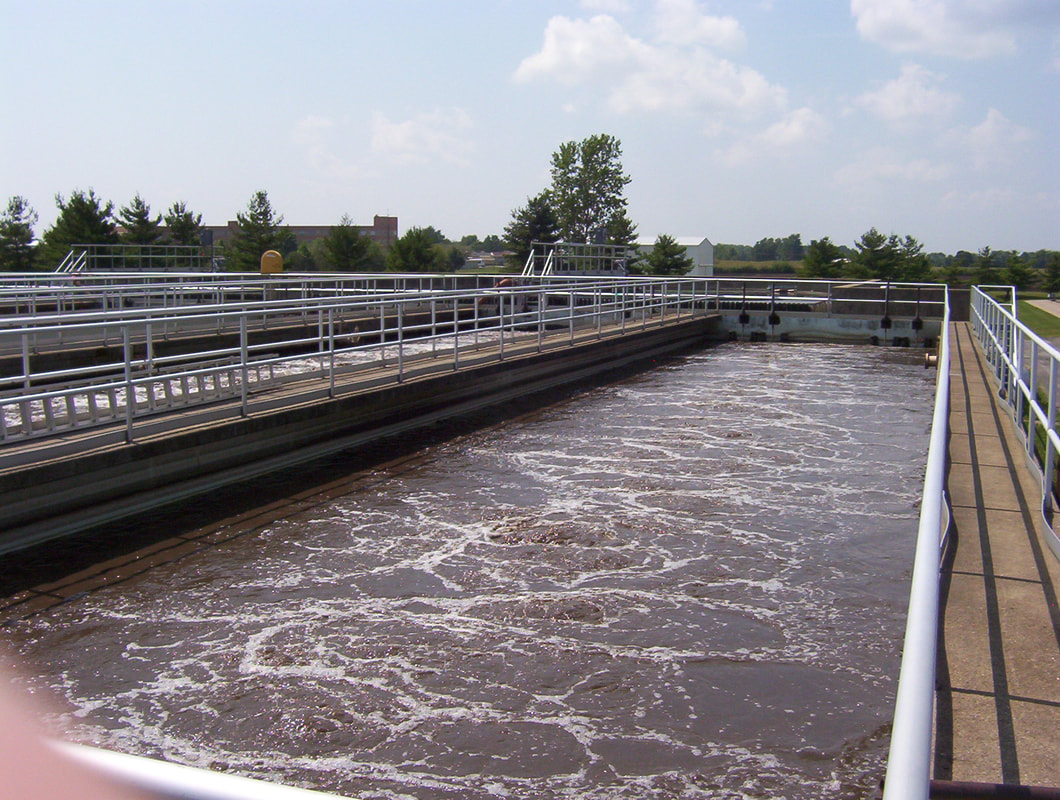Here is what happens to a biomass when the equivalent of microbial candy is introduced to a system:
- When floc which is low F/M comes in contact with high soluble organic influent, bacteria immediately enter log growth on the floc surface
- The high respiration seen in log growth results in low DO in this area of the treatment plant. With respect to aerobic microbes, low DO favors those with high surfaca area. And, filaments have greater surface area than typical floc formers.
- Other organisms react to the abundant soluble BOD by trapping organics in extracellular polymeric materials (EPS). The "food" will be used later when F/M drops by the microbe. If you form EPS to excess, you call it non-filamentous or Zoogleal bulking.
- Another issue with high soluble organics relates to potential unbalanced C:N:P ratios. With low N or P, bacteria with better N & P scavaging strategies grow faster than other microbes. As with low DO, filamentous bacteria are often favored by low C:N:P ratios.
Control options for systems with high soluble influent organics:
- Step-feed influent - this is simply changing from a single influent to multiple influent points along the basin. This works for plug flow or mulitple complete mix systems. Using step-feed, you reduce the DO depression and excess organics seen in single point influent systems. Again this is not effective if you have a single complete mix basin.
- Selectors - this is an anoxic or anaerobic basin where influent and return MLSS mix. If sized approprately, the selector allows for uptake of soluble organics by floc forming organisms (includes the EPS Zoooglea) to the exclusion of obligate aerobic filamentous bacteria. Again residence time and conditions in the selector make for a fine balance between preventing filaments to encouraging their growth.
- Increasing oxygen levels near the influent. The most obvious solution to low DO caused by soluble organics is to increase DO by adding more aeration. If you cannot move more aeration to the influent zone, some systems can find a solution using conentrate or liquid oxygen addition. I have even used hydrogen peroxide feed to increase DO in a activated sludge plant (not to chemically oxidize organics).


 RSS Feed
RSS Feed